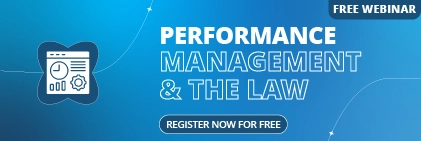With benefits ranging from protecting your business from financial threats, all the way to safeguarding your team from compliance risks, an effective risk management strategy is essential. HR managers and business owners alike need it if they want to weave through a modern business landscape and emerge at the top of their industry. We’ll help you simplify the process today and get you started on the path to a safer business. Identifying risks, assessing their impacts, and creating realistic plans are all crucial parts of the process. With the right steps, turning potential threats into opportunities for growth is more than feasible. This blog post can be your shining light to a better future, combining practical advice with the right tools to get the job done. From grasping the basics, all the way to looking at practical scenarios, we’ve got it all. Ready to protect your business’s future? Let’s get started!
1. Understanding Risk Management
Risk management, at its core, is simply the process of anticipating problems and having solutions or mitigations ready before they become a threat. A risk management solution works as a safety net for your business. No matter if you’re an HR manager or a business owner, safety risks for your employees and business are never desirable. There’s a very straightforward goal of any risk management solution, which is to stop them from interfering with your business’s core functions. By identifying and evaluating risks, you’re able to manage them to keep your operations running smoothly.
It’s not exactly about stopping any and all risks that could possibly happen; it’s about reducing the most common and most dangerous risks. You never want to find yourself in a catastrophic situation. The stronger your strategy, the more confident your team will be in the business. That confidence will be the basis for many growth opportunities going forward. Learn about the benefits of risk management and don’t overlook it.
Common HR related risks include turnover rates due to industry changes, data privacy breaches, or labour law violations. Owners will often struggle with supply chain issues, market shifts, or cybersecurity threats. Each business faces distinct challenges, but no matter the role, a key fact will always remain: Proactive planning prevents pains. If you skip the planning stage, you’ve already cut yourself off at the knees. It is important to structure your organisation effectively to overcome potential challenges.
2. Identifying Potential Risks
It all begins with knowing what you’re up against. You can use tools like a SWOT analysis to find out what risks could impact your business, and how badly your operations would be harmed if these risks occur. Common threats include strategy misalignments, operational failures, or legal compliance issues. Owners can talk to others in their industry for valuable supply chain information, and HR managers could flag down OHS risks. These methods help you identify issues early and see the big picture when it comes to your company. Create a risk register – a list of all known threats to your business. It’s the best way to start predicting an unpredictable world.
Push further with focused brainstorm sessions with the leadership team. Consider doing a PESTLE (Political, Economic, Social, Technological, Legal, Environmental) analysis to see what you might have missed initially. Make sure you record everything, as well as a brief assessment on the likelihood of the threat actually occurring. This should include its most harmful impacts so you know what to prioritise. The goal is to avoid a reactive mindset. Catch the risks before they can catch you.
3. Assessing and Prioritising Risks
Now that you know what you’re looking for, it’s time to list and rank them. Not all threats are the same, and you need to respond accordingly. A minor threat, like a workplace accident such as a tripping hazard, isn’t nearly as dangerous as something like a potential privacy data breach. Your best tool here is a risk assessment matrix. It plots likelihood against impact. A data breach risk will rank highly on both, while a tripping hazard will sit low. HR would prioritise retention risks, while the owners focus on cash flow threats. This saves you from chasing minor issues. Act smartly, and tackle the biggest risks with the resources you have.
Assessing risks doesn’t only have to be quantitative, rather, it should strive to be qualitative as well. The matrix makes this visual. Rare equipment failure doesn’t matter as much as a cybersecurity risk for a digital firm. Prioritisation keeps your efforts effective. This clarity makes sure you aren’t bogged down by less consequential worries, meaning you’re free to protect what matters most.
Key Points for Steps 1 – 3:
- Risk management involves identifying, assessing, and controlling risks.
- Identifying risks is the first step in risk management.
- A risk assessment matrix helps prioritise effectively.
- Tackle high-impact, high-likelihood risks first.
4. Crafting Risk Mitigation Strategies
Mitigation involves four essential strategies for managing risks: avoidance, reduction, transfer, and acceptance. Avoidance involves steering clear of risky actions, whereas reduction entails decreasing their likelihood or impact. Transference involves shifting the risks to third parties, such as through insurance. Acceptance, typically used for minor threats, involves preparing as thoroughly as possible to manage them.
HR can roll out new policies to cut down on breach risks, and owners can use contracts to transfer financial risks. Your plan needs to be specific, with clear steps and fallback options. Add “what-if” scenarios, a move that many skip but one that might just save you. Build these plans for your business specifically, and you’ve got a tailored defence.
5. Putting Your Strategy into Action
A plan that exists solely on paper may as well not exist. It needs to persist within your operations, as part of your routine. Assign roles and track your progress, both in specific departments and organisation-wide. Training programs are an excellent initiative for HR to implement, keeping it straightforward and practical. When everyone’s on the same page, the system works. Above all else, if the plan isn’t practical, it’s not worth making.
Communication is key here; make sure your team knows their responsibilities. Software such as Sentrient’s Risk Management Solution help monitor progress and keep the business aligned. Regular workshops on compliance and safety can sharpen skills. Running drills for emergency situations helps to keep everyone alert. Training should be as simple and realistic as possible. There’s no time for jargon, just practicality. An engaged team helps put your plan to action as quick as possible, turning risk management into a strength.
6. Monitoring and Updating Your Plan
As risks evolve, your plans need to as well. Use Key Risk Indicators (KRIs), such as rising costs or higher than expected turnover rates, to stay alert. Regular audits and compliance checks keeps you on top of things, alongside annual reviews or random spot-checks. Quick adaptation keeps you ahead of the curve, and a dynamic plan is always the way to go.
Set up KRIs to catch early warning signs, such as a drop in sales, possibly hinting at market trouble. Quarterly or annual audits test your strategic effectiveness and the relevance of your plans. If a new regulation that could impact your business is announced, you’ll need to adjust your plans. Monitor tech upgrades for cybersecurity and internal issues affecting productivity. Reviews ensure that your proactive plans don’t become reactive, keeping your organisation ready for whatever comes its way.
Key Points for Steps 4 – 6:
- Carefully evaluate each risk and adopt the risk with the right strategy
- Make sure your plan isn’t purely theoretical; if it doesn’t work in the real world, it’s not worth making
- Stay up to date to ensure you aren’t left behind
7. Using Technology to Boost Risk Management
Technology can be the driving force behind your efforts. Sentrient’s all-in-one risk management system is designed to help you streamline compliance processes and confidently manage risks across your organisation. By opting for a scalable software that’s compatible for businesses of all shapes and sizes, you can protect yourself. Choose tools that suit your goals to minimise risks.
Small businesses might start with spreadsheets or basic apps. Larger firms often opt to use dedicated HR software. Technology reduces errors, saves time, and enhances threat detection. For instance, it might identify a spike in failed logins, highlighting a breach attempt. Choosing Sentrient means choosing safety.
8. Learning from Real-World Examples
Real cases drive the point home. The University of California cut incidents by 20% with a risk-ranking system; proof that proactivity pays off. Compare that with 2008, where banks ignored financial warning signs, triggering a global meltdown. HR can examine successful practices in workplace safety, while business owners analyse shortcomings in crisis management. Achievements serve as motivation, whereas failures provide cautionary insights.
9. Best Practices for Your Organisation
Tailor strategies for your organisation. Make it personal. HR can focus on retention strategies, and owners can look into securing strategic growth risks. Checklists are an obvious but often overlooked method to track your progress, and building a risk-aware culture helps keep everyone on track. A team that’s on the same page is your biggest advantage. Tailor your strategies to your industry and goals.
For example, retailers could prioritise inventory-related items such as theft prevention, while a large tech firm can protect against intellectual property threats. Make sure you celebrate the successes to reinforce vigilance, and review and reflect when something doesn’t work out.
FAQs
1. What’s the simplest way to start risk management?
Begin with a risk register. List potential business risks like operational threats or cash flow dips, then rank them by impact. It’s a straightforward way to launch your risk management process without overcomplicating things.
2. How often should I update my risk management strategy?
Annual check-ups are recommended, or after major shifts to the business or the business environment. This could be after new compliance regulations come into effect, for example. Staying up to date ensures you’re able to handle emerging risk factors and that you’re ready for any surprises.
3. What’s a top risk mitigation tactic?
Risk transfer is a very popular tactic. Insurance is there for a reason; use it to offload financial risk management concerns. Pair it with backups like diversifying your supply line for extra strength.
4. Can technology really improve risk management?
Yes, technology is one of the most effective ways of improving risk management. Risk management solutions identify new risks before they become widespread and automate parts of the monitoring and recording process.
5. How do I get my team risk-ready?
Regular training helps maintain their skills. Embed risk awareness in your company culture, and reward those who identify workplace safety risks.
Read More About Risk Management System:
- 9 Steps to Develop an Effective Risk Management Strategy: Key Steps and Best Practices
- 9 Key Components of an Effective Enterprise Risk Management Framework
- Implementing Risk Management Software: 5 Essential Steps in a Step-by-Step Guide
- Top 10 Questions to Ask Before Choosing Risk Management Software
- How Can a Risk Management System Improve Compliance and Security





